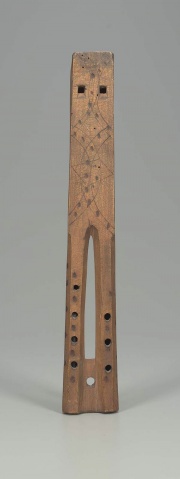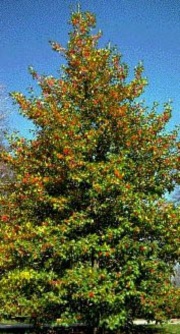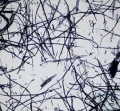Difference between revisions of "Holly"
| Line 31: | Line 31: | ||
== Resources and Citations== | == Resources and Citations== | ||
* Schoch, W., Heller, I., Schweingruber, F.H., Kienast, F., 2004:[http://www.woodanatomy.ch/ Wood anatomy of central European Species]: Holly, [http://www.woodanatomy.ch/species.php?code=ILAQ Ilex aquifolium L.] | * Schoch, W., Heller, I., Schweingruber, F.H., Kienast, F., 2004:[http://www.woodanatomy.ch/ Wood anatomy of central European Species]: Holly, [http://www.woodanatomy.ch/species.php?code=ILAQ Ilex aquifolium L.] | ||
| + | |||
* G.S.Brady, ''Materials Handbook'', McGraw-Hill Book Co., New York, 1971 Comment: p. 402 | * G.S.Brady, ''Materials Handbook'', McGraw-Hill Book Co., New York, 1971 Comment: p. 402 | ||
| Line 39: | Line 40: | ||
* ''Dictionary of Building Preservation'', Ward Bucher, ed., John Wiley & Sons, Inc., New York City, 1996 | * ''Dictionary of Building Preservation'', Ward Bucher, ed., John Wiley & Sons, Inc., New York City, 1996 | ||
| − | * Wikipedia: Holly. Accessed Oct. 30, 2004 | + | * Wikipedia: Holly: https://en.wikipedia.org/wiki/Holly Accessed Oct. 30, 2004 |
* ''Van Nostrand's Scientific Encyclopedia'', Douglas M. Considine (ed.), Van Nostrand Reinhold, New York, 1976 | * ''Van Nostrand's Scientific Encyclopedia'', Douglas M. Considine (ed.), Van Nostrand Reinhold, New York, 1976 | ||
Revision as of 08:17, 3 October 2020
Description
Any of several shrubs from the genus Ilex that are found throughout the world. Holly plants typically have glossy green leaves with red berries and are grown for ornamentation. Timber from the holly has a fine uniform texture with an irregular grain pattern. It has been used for sculpture, carving, small articles, Veneer, and Marquetry.
Synonyms and Related Terms
Ilex aquifolium (English holly); Ilex opaca (American holly); houx (Fr.); acebo (Esp.); agrifoglio (It.)
Physical and Chemical Properties
Density = 45-55 ppcf
Paper fiber type: hardwood. Using transmitted light microscopy, pulp is identified by oblong vessels with with heavy pitting. Perforations are scalariform with tapered, spiraled ends . Appearance with Graff "C" stain: dark blue, but varies with bleaching. Common pulping method: kraft.
Additional Images
Resources and Citations
- Schoch, W., Heller, I., Schweingruber, F.H., Kienast, F., 2004:Wood anatomy of central European Species: Holly, Ilex aquifolium L.
- G.S.Brady, Materials Handbook, McGraw-Hill Book Co., New York, 1971 Comment: p. 402
- Ralph Mayer, A Dictionary of Art Terms and Techniques, Harper and Row Publishers, New York, 1969 (also 1945 printing)
- F. H. Titmuss, Commercial Timbers of the World, The Technical Press Ltd., London, 1965 Comment: 45-55 ppcf
- Dictionary of Building Preservation, Ward Bucher, ed., John Wiley & Sons, Inc., New York City, 1996
- Wikipedia: Holly: https://en.wikipedia.org/wiki/Holly Accessed Oct. 30, 2004
- Van Nostrand's Scientific Encyclopedia, Douglas M. Considine (ed.), Van Nostrand Reinhold, New York, 1976
- Random House, Webster's Encyclopedic Unabridged Dictionary of the English Language, Grammercy Book, New York, 1997
- The American Heritage Dictionary or Encarta, via Microsoft Bookshelf 98, Microsoft Corp., 1998
- CRC Handbook of Chemistry and Physics, Robert Weast (ed.), CRC Press, Boca Raton, Florida, v. 61, 1980 Comment: density=47 ppcf (0.76 g/cm3)
- Walter Rantanen. "Fiber ID Course." Integrated Paper Services. June 2013. Lecture.







